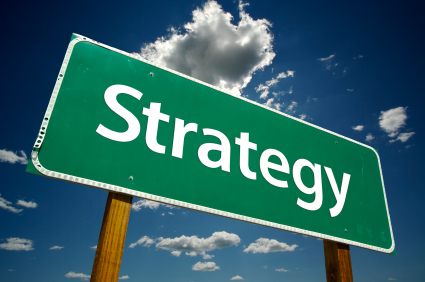 In a recent post we explored how the idea of the OODA Loop, created by US Air Force strategist, Colonel John Boyd, can clarify and focus strategic action. This week, we are once again drawing from a strategic military process. This time we are drawing on an approach from the new Army-Marine COIN, (Counter Insurgency), field manual that we learned about in an awesome book, Great Powers: America and the World After Bush, by Thomas P. M. Barnett. (We urge you to buy, read, and share this important work!)
As with the OODA Loop, we find the elegance of the summary of such sophisticated insight and thought truly exciting. From our work in 2130 Partners to our participation in the global non-profit The Hunger Project, we find that transforming an existing condition or paradigm is what is at the heart of real, meaningful and lasting change. Processes like the OODA loop and those in the COIN field manual can be used to alter paradigms. As summarized by Thomas Barnett, the COIN field manual outlines the process as:
In a recent post we explored how the idea of the OODA Loop, created by US Air Force strategist, Colonel John Boyd, can clarify and focus strategic action. This week, we are once again drawing from a strategic military process. This time we are drawing on an approach from the new Army-Marine COIN, (Counter Insurgency), field manual that we learned about in an awesome book, Great Powers: America and the World After Bush, by Thomas P. M. Barnett. (We urge you to buy, read, and share this important work!)
As with the OODA Loop, we find the elegance of the summary of such sophisticated insight and thought truly exciting. From our work in 2130 Partners to our participation in the global non-profit The Hunger Project, we find that transforming an existing condition or paradigm is what is at the heart of real, meaningful and lasting change. Processes like the OODA loop and those in the COIN field manual can be used to alter paradigms. As summarized by Thomas Barnett, the COIN field manual outlines the process as:
- Diagnose – environments’ deficits
- Dialogue – with locals about how to address them
- Design – programs
- Learn – from application
- Redesign – programs over and over until local capacity has been built up
As usual, the process is simple at its core and not easy in its real world execution.
In practice in your organization it looks something like this:
- With your strategic vision or "Yonder Star" clearly in mind, examine the present and ask “What’s Missing – from our Yonder Star today that is most important to work on?”
- Engage with your leadership team, colleagues, or fellow community leaders, regarding their insights and proposals. In working with The Hunger Project we say, “We stand with the hungry people as the solution, not the problem!” What shifts will occur if you relate to your associates the same way? In other words, how would you engage in conversations differently if you considered your employees, and colleagues as part of the solution, not the problem?
- Develop a shared understanding of the approaches, strategies, and actions that will have the highest leverage in moving towards fulfillment of the Yonder Star.
- Get to work and conduct regular reviews of effectiveness. What’s working and what’s not? Where is course correction called for?
- Redesign and redirect the action until desired results are happening.
- Engage with each other regarding the growth and development of team members individually and collectively. We call the shared knowledge and capabilities within the team "Collaborative Capacities."
We particularly call your attention to the last phrase of the COIN field manual “until local capacity has been built up.” To us, that is  the most critical notion of all when it comes to sustainability. Command-and-control leadership and traditional service delivery models for development are fatally flawed in this regard. If local collaborative capacity building has not taken place, whether in a village in Afghanistan, or on the factory floor, programs fall apart as soon as the "top down providers" leave.
the most critical notion of all when it comes to sustainability. Command-and-control leadership and traditional service delivery models for development are fatally flawed in this regard. If local collaborative capacity building has not taken place, whether in a village in Afghanistan, or on the factory floor, programs fall apart as soon as the "top down providers" leave.
Here are some thoughts to jog your thinking about how this model can help you lead:
How does this “formula” give you new access to diagnosing your individual and collective leadership challenges?
How can you apply the “formula” to altering your historic way of operating and fill in missing steps in the empowerment process?
Are you willing to take the “formula” and actually get to work on accelerating your productivity and the effectiveness of your interactions?
Have you given your full attention to collaborative capacity building with your executive team? Your employees?

 If you have done the completion work we recommended in our last post, it’s time to move on to creating and documenting your 2010, (or longer), Yonder Star(s) and creating plans for fulfillment.
If you have never taken the time to sit down and map out your Yonder Star, you might start by doing some thinking about real, meaningful New Year’s resolutions. You don't necessarily have to think of something new and different that you have never tried before. Most of us have "chronic resolutions," which are ones that we promise ourselves every year and at some point they get lost along the way. The difference this year should be to create an action plan and a timeline to go with your resolutions/goals. Breaking your vision down into the action steps you need to take to make it a reality will help you see each step of the path. Often big visions are not as daunting when you break them down into manageable pieces. The other key is timing. Create timeframes for your goals that are realistic for you. After you have written it, take your plan and keep it somewhere visible where you can refer to it often. If you bury it in a drawer or file somewhere it will just slip away beneath the current of your life.
If you have done the completion work we recommended in our last post, it’s time to move on to creating and documenting your 2010, (or longer), Yonder Star(s) and creating plans for fulfillment.
If you have never taken the time to sit down and map out your Yonder Star, you might start by doing some thinking about real, meaningful New Year’s resolutions. You don't necessarily have to think of something new and different that you have never tried before. Most of us have "chronic resolutions," which are ones that we promise ourselves every year and at some point they get lost along the way. The difference this year should be to create an action plan and a timeline to go with your resolutions/goals. Breaking your vision down into the action steps you need to take to make it a reality will help you see each step of the path. Often big visions are not as daunting when you break them down into manageable pieces. The other key is timing. Create timeframes for your goals that are realistic for you. After you have written it, take your plan and keep it somewhere visible where you can refer to it often. If you bury it in a drawer or file somewhere it will just slip away beneath the current of your life. stretching yourself enough? Focus on designing the most catalytic, highly leveraged action steps you can. By catalytic we mean that your actions produce the intended results without your being used up in the process. By highly leveraged, we mean you produce very big results with minimal resources.
stretching yourself enough? Focus on designing the most catalytic, highly leveraged action steps you can. By catalytic we mean that your actions produce the intended results without your being used up in the process. By highly leveraged, we mean you produce very big results with minimal resources.